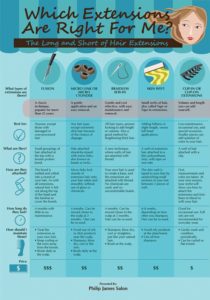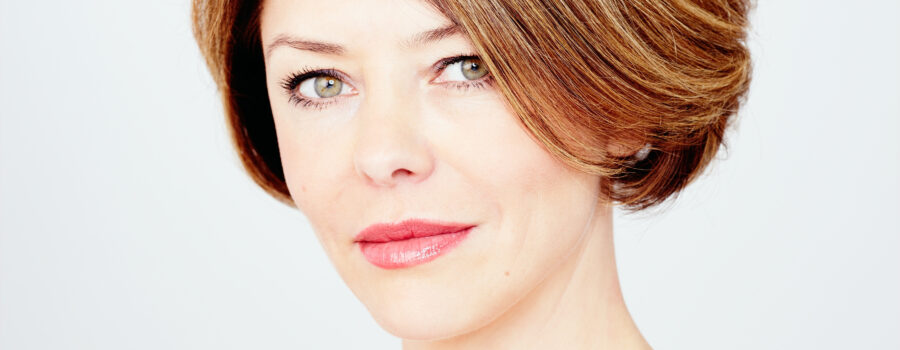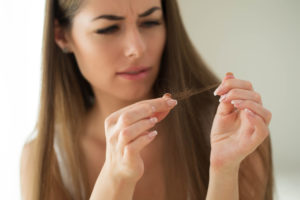
Not long ago, a graphic was published in Modern Salon that provided readers with a working knowledge of the best types of natural looking hair extensions for their hair. Including options like fusion, micro links, and braid-less sew-ins, the graphic provided a clear explanation for hair types that worked best for each technique.
But what’s often missing in hair extensions literature are available options for those with a hair texture or condition that doesn’t lend itself to standardized hair extensions methods. For example, the sew-in method has for years traditionally been viewed as the best hair extensions for black hair. But what’s not considered in this blanket approach are the varying amount of textures of ethnic hair, which can vary greatly from person to person. Two women, each with what appear to have similar hair textures, might need to search for two different types of hair extensions to get the best results.

Additionally, many women often have multiple hair textures, which means they may be a candidate for a combination of hair extensions methods. For example, curly hair extensions in a keratin bond method might be used to mirror one part of her textured hair, and Remy or Malaysian hair extensions in a skin weft or tape on method would be used to reflect the location of the alternate hair texture. And that doesn’t include thinning or problem areas that need to be addressed—managing this could require completely different hair extensions or an alternative hair replacement approach.

How will hair extensions affect my unique hair texture?
And what about people who want to incorporate wearing their own natural hair in their hair routine? Hair extensions are a great way to have instant access to long locks, but for those that use hair extensions, hair replacement, or wigs to help manage thin hair, the option to wear and care for our natural hair is always a welcome one. Going without hair extensions altogether from time to time, and enjoying our natural hair without adding bleach, color, or chemical relaxers can strengthen our hair shafts and keep undue pressure off our follicles.

So, once and for all, how do I get the best hair extensions for my hair? Follow these three simple steps:
Get the most natural looking hair extensions you can find. There are plenty of graphics, literature, customer reviews, and general information on the Internet, but the only way to really get a feel for what’s right for you is to meet with a professional for a consultation. This meeting is the most important step in determining your hair needs, and it will allow you to view and touch some of the hair extensions that will be used. Plus, you’ll get the option of seeing the work done (or examples of it) and will come away armed with information you can use to your advantage.
If you have a hair condition, make sure you tell your hair stylist. Just like the Modern Salon graphic, recommendations for hair extensions only extend as far as the methods available—what’s right for your hair may be completely wrong for someone else. Getting the right hair extensions for thinning hair doesn’t just involve picking a method or two. It also means undergoing an extensive scalp therapy analysis and working with your stylist to best incorporate the hair extensions so that there’s no damage to your natural hair and so that the hair extensions are as natural looking as possible.
Consider taking a break from hair extensions completely. It may sound strange for a hair extensions salon to tell you to say goodbye to your long locks, but sometimes a break is just what our natural hair needs. Consider a hair therapy revitalization or booster to keep your hair strong, especially if it’s prone to breakage or thinning. No matter how much of our own natural hair we have, we want to keep it as healthy as possible.
Bottom line: Remember that the best hair extensions for you might be something you’d least expect. Contact a hair extensions specialist to explore your options.



